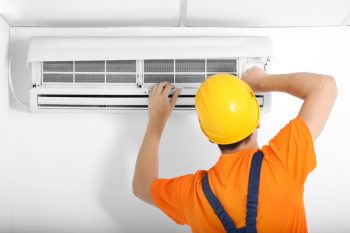
A washing machine is a vital appliance that helps you tackle your laundry, keeping your clothes clean and fresh. One of the most important components of your washing machine is the belt that helps to drive the drum.
It is easy to overlook this small but essential part, but over time, the belt can become worn, stretched, or even break, leading to issues with the machine’s performance.
Therefore, it is essential to keep an eye out for the signs that might show that your washing machine belt may need to be replaced.
In this article, we will walk you through some of the most common indicators you need to help you decide when to replace your washing machine belt.
By paying attention to these signs, you can take action before any major problems arise and keep your washing machine running smoothly.
Here are some important signs to keep an eye out for:
- Squeaking sound.
- Burning smell.
- Clothes not getting cleaned.
- Excessive vibrations.
- The machine is not turning on.
- The drum is not spinning.
- Visible damage.
- Machine stopping mid-cycle.
- Foreign objects.
- Substandard belt material.
If you experience any of these signs with your washing machine, you should get the belt replaced immediately. Delaying the replacement process will result in other damaged components.
This article discusses the most common signs your washing machine may give you as an indication of belt replacement, along with a step-by-step guide on how to replace your washing machine belt yourself.
Signs Your Washing Machine Belt Needs Replacing
A washing machine has many important components, including a belt. The belt is responsible for spinning the drum of the washing machine, which eventually washes your clothes, freeing them of tough, stubborn stains.
Several indicators should draw your attention toward washing machine belt replacement. You may have overlooked the initial damage, but if your washing machine is experiencing any of the following signs, you should consider replacing the belt.
Here are a few common signs:
1. Squeaking Sound

A washing machine typically makes a little noise when it is turned on.
The operational sound is not a cause for concern, but if you hear a high-pitched whining or squealing sound coming from your washing machine during the spin cycle, It could be a sign that the belt is worn or stretched.
A loose belt can also make a squeaky sound. If you notice the noise becoming louder as you continue using the machine, you must replace the belt.
2. Burning Smell

Have you ever noticed a burning smell coming from your washing machine? This should indicate that your washing machine belt is worn out beyond repairs. Any burning smell is a big red alert and must be addressed immediately.
When the belt is damaged, it can create friction between the belt and motor pulley, which generates heat and can cause a burning smell.
Therefore, addressing this issue as soon as possible is essential to prevent further damage to your machine.
3. Clothes Not Getting Cleaned

A new or perfectly functional washing machine will wash your clothes effectively in one to two cycles. But a worn-out washing machine belt can impair the machine’s ability to do that.
If you notice that your clothes come out of the washing machine looking less clean than they used to, you may need to check the belts. A faulty washing machine belt will cause the drum to rotate slowly.
If the drum is rotating too slowly, it will not be able to clean your clothes properly. Replacing the belt should fix this issue and help your clothes come out cleaner.
4. Excessive Vibration

Washing machines vibrate when they are in operation. But excessive noise and vibration are alarming signs. A washing machine shaking unusually or making loud noises may have a faulty and worn-out belt.
When the belt is damaged, it can cause the drum to vibrate excessively, resulting in a noisy machine. Replacing the belt should eliminate the excess vibration and make your washing machine run more smoothly.
5. Machine Not Starting
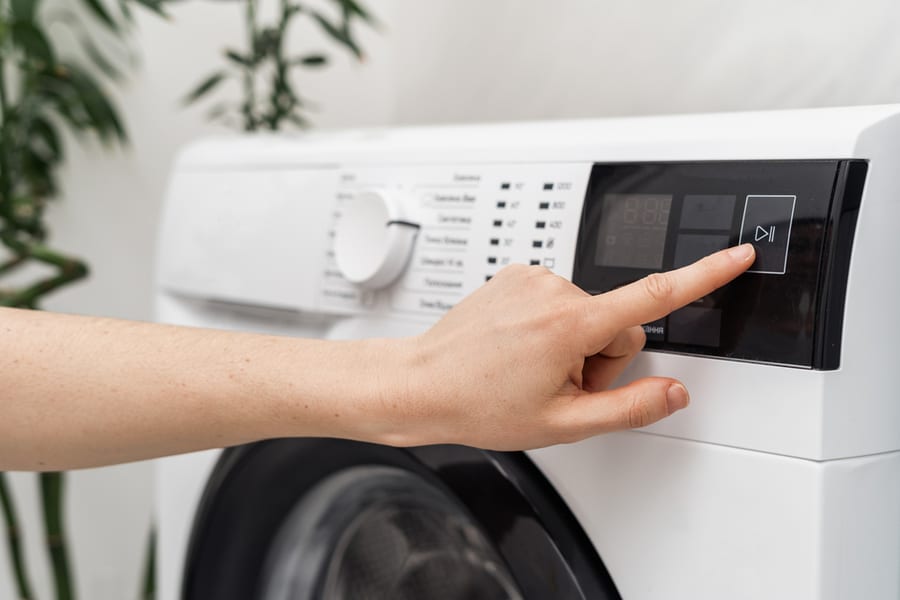
Power outages can cause the machine not to start. But if the power source is working perfectly and you still can not start the washing machine, you should check for other causes.
If you have been struggling to start your washing machine and have checked every electrical connection only to find everything in perfect condition, the culprit may be your washing machine belt.
If the belt prevents the motor from turning on, it cannot start the machine. At this point, you must replace the belt to have your washing machine up and running.
6. Drum Not Spinning
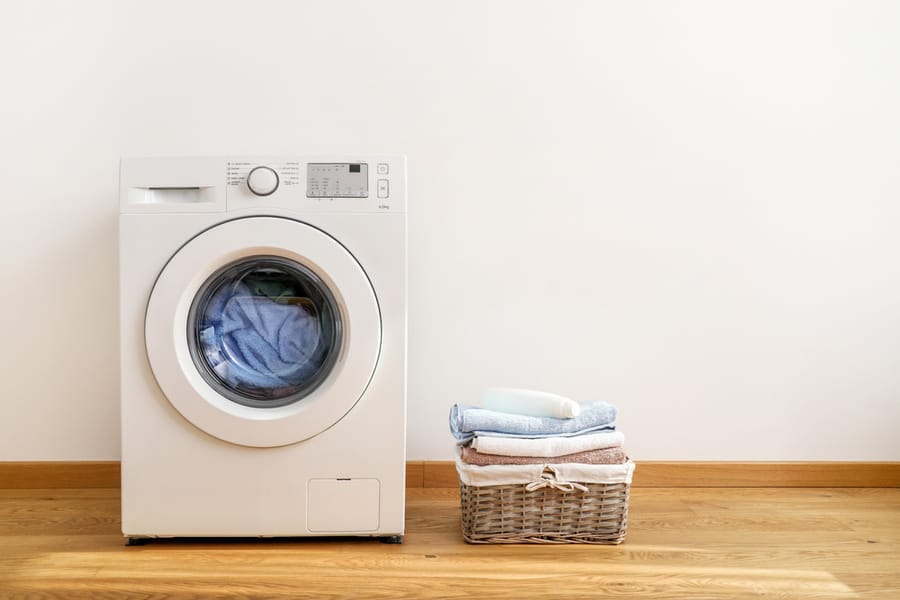
Is the drum of your washing machine not spinning or moving? A loose or broken belt could be the cause.
The spinning drum is responsible for mixing the detergent and water and washing away the stains from clothes.
When the belt is damaged, it can not properly rotate the drum, resulting in a non-functional washing machine. Replacing the belt should keep the drum moving and make your washing machine function correctly.
7. Worn Out Belt
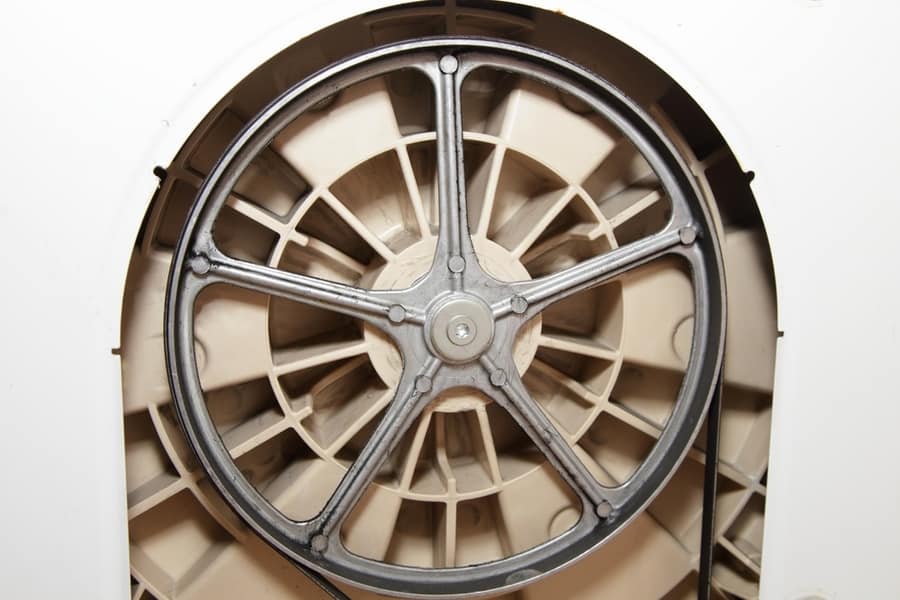
Like any other mechanical component, a washing machine belt has a finite lifespan. If the machine is several years old, the belt may have reached the end of its useful life and needs to be replaced.
If you can visually inspect the belt and see that it is cracked, frayed, or has any other signs of damage, it may be time to replace it.
Over time, belts can become damaged due to regular use, and it is essential to replace them before they cause further damage to your washing machine.
8. Machine Stops Mid-Cycle

Does your washing machine keep stopping in the middle of the washing cycle? If it is not the power outage causing this, it could be due to a damaged belt.
If the belt is clipping or coming off the motor pulley, it can cause the machine to stop mid-cycle. If your machine has started acting erratically, stopping mid-cycle, you should consider replacing the belt.
9. Foreign Objects
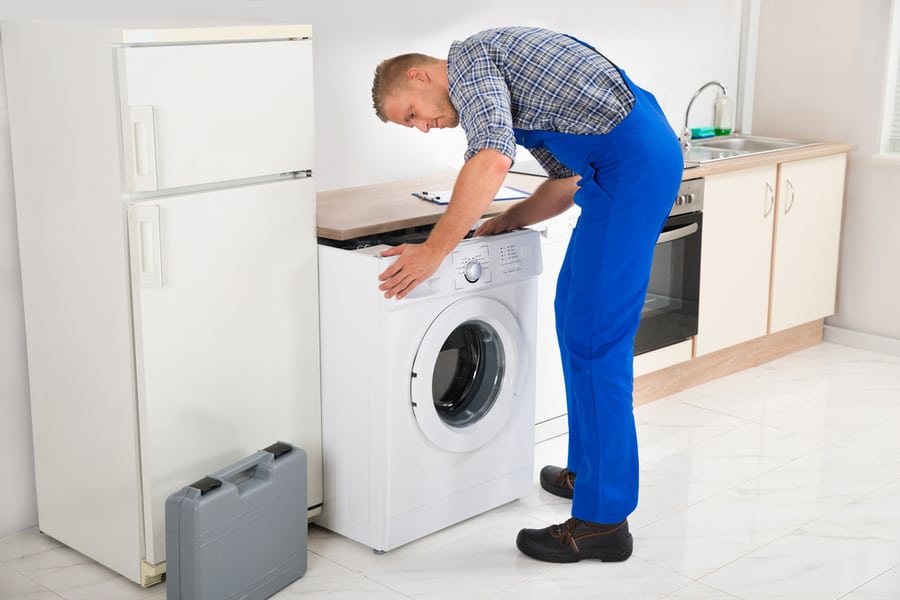
Sometimes, foreign objects can enter the washing machine and damage the internal components. In addition, if something gets caught in the drum during a wash cycle under unforeseen circumstances, it can cause the belt to break or endure serious damage.
This can happen if a small item of clothing gets trapped between the drum and the agitator. Sometimes, tiny critters can reside in hidden corners of the washing machine, including the area near the belt.
In such a case, you need to replace the belt before it damages other machine components.
10 Low-Quality Belt Material

This is more likely to happen if you have purchased a second-hand washing machine whose belt has already been replaced with a low-quality one or bought a cheap washing machine that does not have good-quality internal components.
The quality of the components determines the performance of your washing machine. Substandard machinery will lead to substandard performance.
Therefore, if the belt is low quality or made of substandard materials, it may not withstand the demands of regular use. This can cause the belt to break or wear down more quickly than expected, leading to a need for replacement.
How To Change Washing Machine Belt
If you have decided to replace your old worn-out belt with a new one, you can do so with a few basic tools and careful attention to detail.
Here is a step-to-step guide on how to replace a washing machine belt:
Step #1: Take Safety Precautions

Before beginning any repair work on your washing machine, it is essential to take appropriate safety precautions.
Unplug the machine from the power supply to avoid any electrical accidents. Wear safety gear to protect your hand and eyes as an extra safety precaution.
Step #2: Locate the Belt

The first thing you need to do is locate the belt that needs to be replaced. The belt is located around the drum of the washing machine, and it connects the motor to the drum.
Access to the belt can usually be gained by removing the back or front panel of the washing machine, depending on the model.
Step #3: Remove the Old Belt
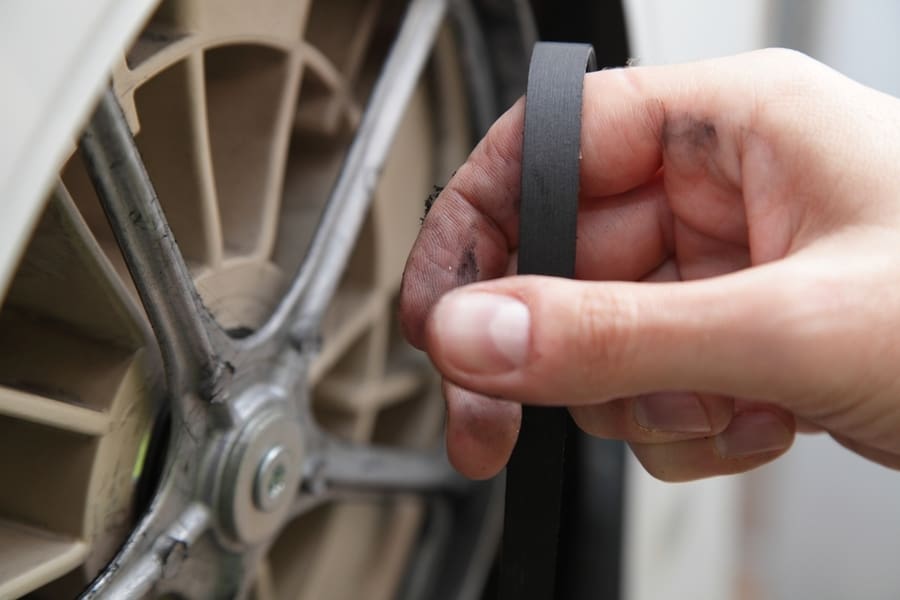
After you have located the washing machine belt, you should remove it. First, loosen the belt tensioner using a wrench or a socket to remove the old belt.
Then, slide the belt off the pulley and drum. You may need help with this task since the drum can be heavy and tricky.
Step #4: Install the New Belt

Place the new belt around the drum and the motor pulley. Ensure that the belt is properly aligned and snugly fitted around the pulleys.
If you feel like you can not install the belt correctly, consult a professional or someone with prior experience with washing appliances.
Step #5: Adjust the Tension
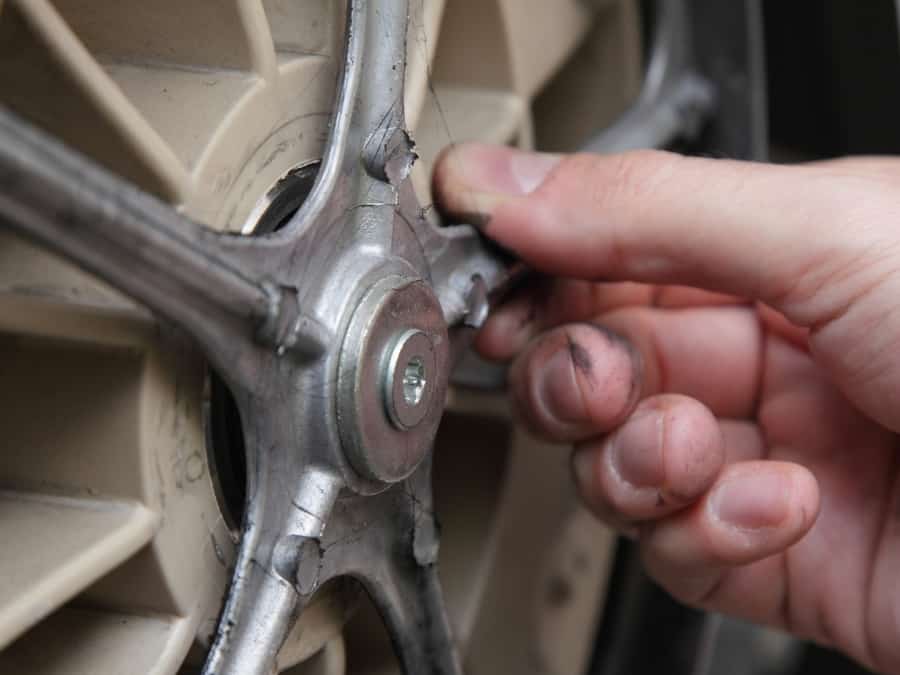
Using a wrench or a socket, tighten the belt tensioner until the belt is tight. Ensure that the tension is just right and not too tight, which could cause premature wear on the belt.
This step is extremely important and requires skill and precision, as slightly loose or tight can make a lot of difference and affect the machine’s performance.
Step #6: Check the Alignment
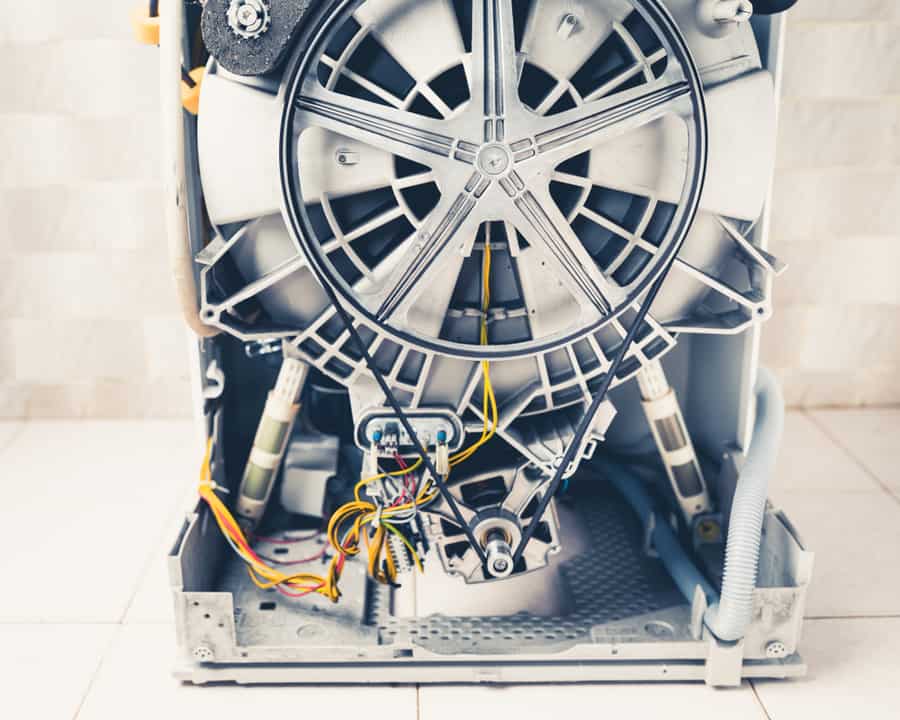
Another important step of the process is to ensure that the belt is properly aligned and not slipping off the pulleys. Finally, turn the drum by hand to ensure the belt runs smoothly.
Step #7: Reassemble the Washing Machine

Once satisfied with the belt’s alignment and tension, reassemble the washing and replace the front and back panel.
Step #8: Test the Machine
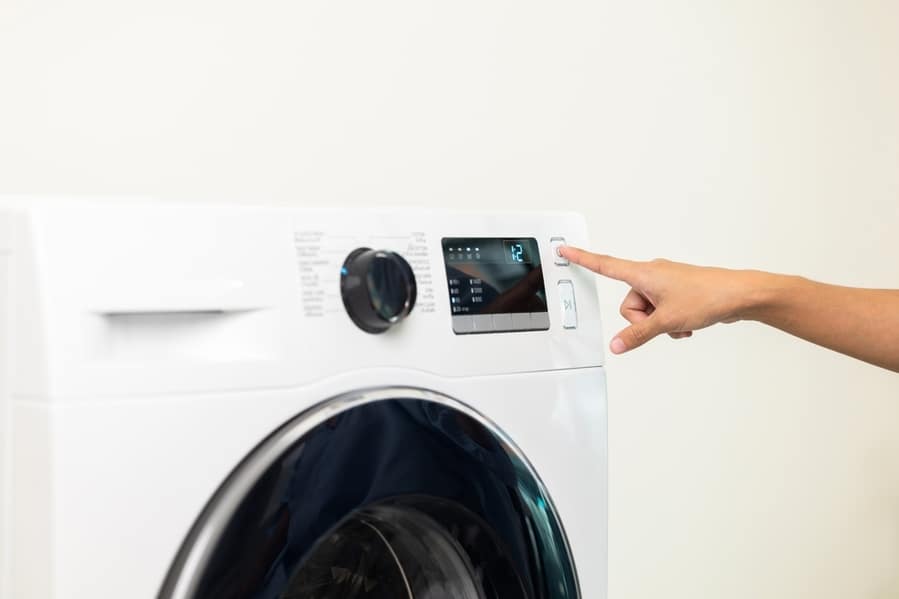
Plug the washing machine back into the power supply and turn it on to test the new belt. If the belt is running smoothly, then the repair is complete.
Following these steps, you can replace the washing machine belt at home without paying big amounts to a professional.
With some basic tools and knowledge, you can replace the belt in minutes and have your washing machine up and running again. Remember always to take the necessary safety precautions when working on any appliance.
Conclusion
Monitoring your washing machine’s belt is important to ensure it is functioning properly. A worn-out or damaged belt can lead to various issues, including the machine not spinning or draining properly.
Following the steps outlined in this article, you can easily determine if your washing machine belt needs replacing. If you decide to replace it, the process is simple and inexpensive and can save you from costly repairs.
So, keep your washing machine in excellent shape by regularly checking its belt and addressing any issues promptly. Enjoy doing laundry.
Frequently Asked Questions
What Should I Do To Keep My Already Installed Belt Maintained?
There are several ways to keep your washing machine belt in good condition for years.
Here are a few tips that will help:
- Regularly inspect the belt for any signs of wear and tear.
- From time to time, clean the belt to prevent the accumulation of dirt and debris.
- If the belt is too loose, it can slip and cause the machine to malfunction. Similarly, if it is too tight, it can start tearing up. Adjust the tension.
- Do not overload the machine.
What Tools Do I Need To Replace My Washing Machine Belt?
You must purchase the right size and type of belt for your washing machine.
Other than that, here is a list of things that you will need:
- Pliers
- Screwdriver
- Wrench
- Putty knife
- Gloves
It is always best to consult the washing machine manual for specific instructions on replacing the belt, as the tools required may vary depending on the machine’s model.




